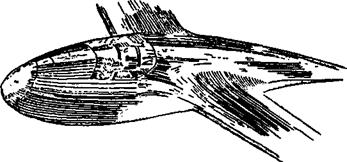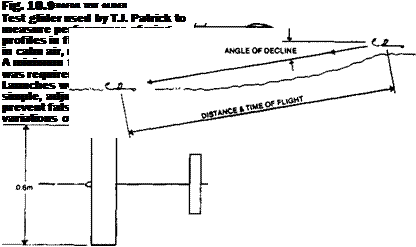Trim and stability
12.1 DEFINITIONS
Probably no aspect of aeronautics has caused so much confusion among model fliers as stability, so it is well to begin with some simple basic concepts and definitions.
An aircraft is stable if, after a disturbance, it tends to return to the flight attitude determined by its trim. This is not the same thing as saying it will always seek to return to straight and level flight If, and only if, the controls are centralised, a stable model will try to keep straight and level. If the controls are set for a steep dive, a stable aircraft will strive to retain this attitude. That is, it will go on diving until the trim is changed. A stable aircraft trimmed for a steady rate of turn at a suitable angle of bank will tend to continue in the steady turn, and so on for every other kind of trim. A model may be trimmed to fly inverted. If it is stable it will tend to remain inverted as long as the controls are set so. (Models with a fair amount of wing dihedral are seldom stable inverted, they tend to roll upright. An aircraft with no dihedral but with some degree of sweepback on the mainplane may be quite stable both upright and inverted.)
Gusts and other upsetting influences, including the actions of the pilot, frequently cause departures from the trimmed attitude but stability will strive to return the aircraft to the position prescribed by the controls wherever they are at a given moment There will always be some oscillations to and fro on either side of the trimmed attitude, somewhat like a pendulum, but the stable model will generally damp down such variations fairly quickly if left alone. A truly stable aircraft will usually fly more efficiently if it is allowed to settle down to its trim without constant interference from the pilot. Too many small twitches on the controls achieve litde but create extra drag and upset the flight.

















